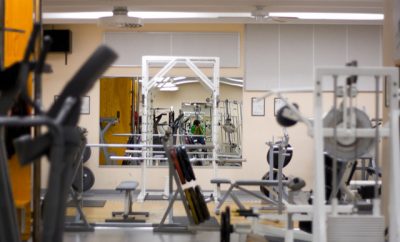 Image courtesy of [Thomas Hawk via Flickr]
Image courtesy of [Thomas Hawk via Flickr]
Crime
Police Forces Are Getting More Diverse, But is That Enough?
The number of police officers in the United States has increased significantly over the last several decades, according to a Bureau of Justice Statistics report released last week. Local police departments are also becoming more diverse, as women and minorities continue to make up a larger share of forces.
The report provides an interesting snapshot of American police in 2013, highlighting some notable trends that have occurred over the last 26 years. In addition to becoming more diverse, the number of sworn police officers has also steadily increased. Since 1987, the number of sworn police officers has gone up by approximately 35 percent, with a total of 477,000 officers in 2013.
Another interesting finding in the BJS report is that the most American police officers work in cities with large populations. Only three percent of local police departments serve populations greater than 100,000, but these departments employ 54 percent of all sworn officers. In fact, many police departments in the United States are very small. Nearly half (48 percent) of the 12,326 local police departments have fewer than ten sworn officers.
The racial diversity among officers has become a very important issue in light of the growing tensions between minority communities and the police, which was highlighted in the Justice Department’s review of the Ferguson Police Department.
The recent BJS report indicates that ethnic and racial minorities are increasingly being represented in local police departments. Roughly 27 percent of all full-time police officers were members of a racial or ethnic minority in 2013. In contrast, the number of minority police officers was less than 15 percent in 1987. The chart below details the growth in minority police officers over time based on BJS surveys.
Police departments serving cities with large populations tend to be much more diverse than those in small towns. As you can see in the chart below, nearly three-quarters of all police officers are white, but as the size of a police department’s jurisdiction increases that number goes down considerably. While the composition of larger police departments tends to be more representative of the populations that they serve, this remains an issue for many departments, particularly those in smaller cities. For example, at the time Michael Brown’s death last summer, 50 of the 54 police officers in Ferguson, Missouri were white, yet 65 percent of the city’s residents were black.
The BJS data further indicates that more and more women are joining the ranks. As of 2013, one in eight police officers and one in ten first-line supervisors were female. The total number of female police officers has increased by roughly two percent since 2007, the last time that this data was collected. Much like racial diversity, larger police forces typically have a significantly higher proportion of female officers relative to smaller departments. According to the report, “the percentage of female first-line supervisors was more than twice as high in departments serving 250,000 or more residents (15 percent), compared to departments serving fewer than 50,000 residents (six percent).”
The percentage of women serving in supervisory positions was lower than the percentage of female police officers in all population groupings. In total, women make up 12.2 percent of the American police force and 9.5 percent of those serving in supervisory positions. This survey marked the first time that data on female representation in supervisory and managerial positions was collected so historical data is not available for comparison.
The findings from this report indicate the extent to which diversity has increased in police departments in recent decades, as well as the overall growth in the number of police officers in America. While there have been significant improvements in overall police diversity, there remain several significant gaps among individual police departments. Although larger police departments tend to be much more diverse than smaller ones, many departments are still much more white than the populations that they serve. Having greater racial parity between police and the residents that they interact with may be a important step toward improving community relations. The recent growth in diversity marks one step toward better representation, yet in cities like Ferguson, Missouri, there is still a long way to go.








Comments